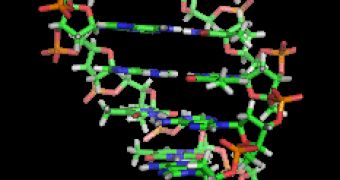When it comes to certain treatments, sometimes the task of dealing with infections or tumors falls to very invasive procedures, and implants can be used for supervision purposes, but a DNA computer could make all those things unnecessary.
As it happens, a DNA computer is precisely what a team of researchers has just created, or at least theorized as being feasible.
The team is made of scientists from the Univ. of Washington (UW), the California Institute of Technology (CalTech), the Univ. of California (UC) and Microsoft Corp. (MSFT).
They have introduced a “toolbox” that is the most promising DNA-based computer so far. Or so they claim anyway.
At its core, the idea is that a DNA (deoxyribonucleic acid) toolbox can take inputs and perform a series of displacement reactions on “Gate” strands.
Those inputs are small strands of DNA or microRNA (short for micro-ribonucleic acid).
That's just half the operation though. The other half is when the DNA toolbox selectively puts out a set of desired outputs that can be used to activate man-made molecules for different goals.
The molecules can then deliver drugs, feed into other DNA networks, turn on sensors (if available), etc.
The best part in all this is that the DNA computer network would be preserved and replicated thanks to the various cellular nucleases, topoisomerases, helicases and ligases that cells used to process DNA.
“Among the many proposed architectures for strand displacement computation, ours is unique in that it relies exclusively on linear, double-stranded DNA complexes (processed by ‘nicking’ one of the strands),” the scientists explain in their research paper.
“Because this structure is compatible with natural DNA, we are able to produce our computational elements in a highly pure form by bacterial cloning. Thus, we bypass the practical limitations in the length and purity of synthetic strands.”
According to UW Electrical and Computer Engineering Professor Georg Selig (the head of the research team), to create the DNA toolbox they started from an abstract, mathematical description of a chemical system, then used DNA to build molecules to fit what dynamics they wished. General-purpose tools can eventually be designed from this.
Human cell compatibility is still a long way off, but as soon as it's achieved, we can expect a way to beat cancer, improve drug delivery, etc. Sadly, they can also, very easily, be used as bio weapons, like when a DNA computer lays dormant for years, then suddenly becomes a cancerous tumor.

 14 DAY TRIAL //
14 DAY TRIAL //